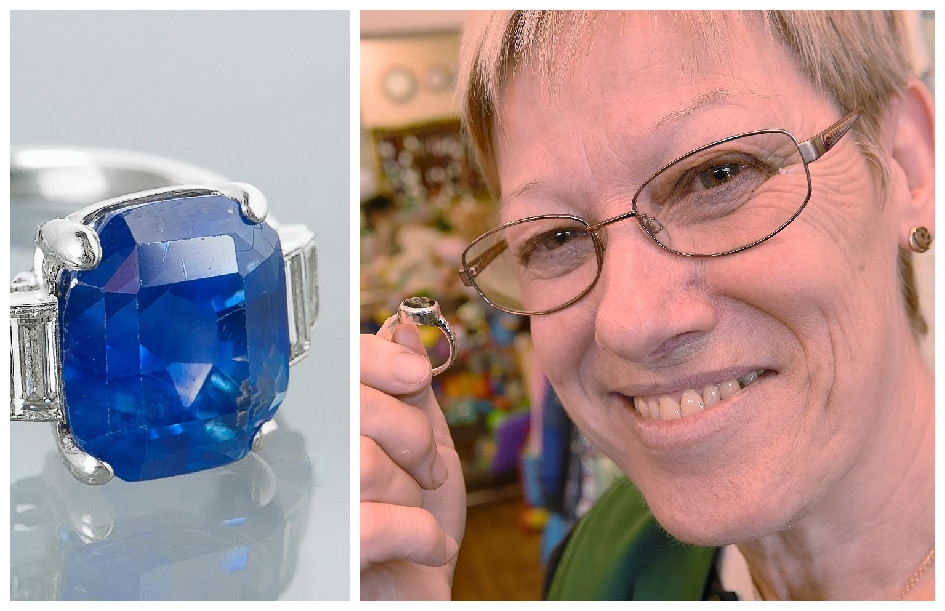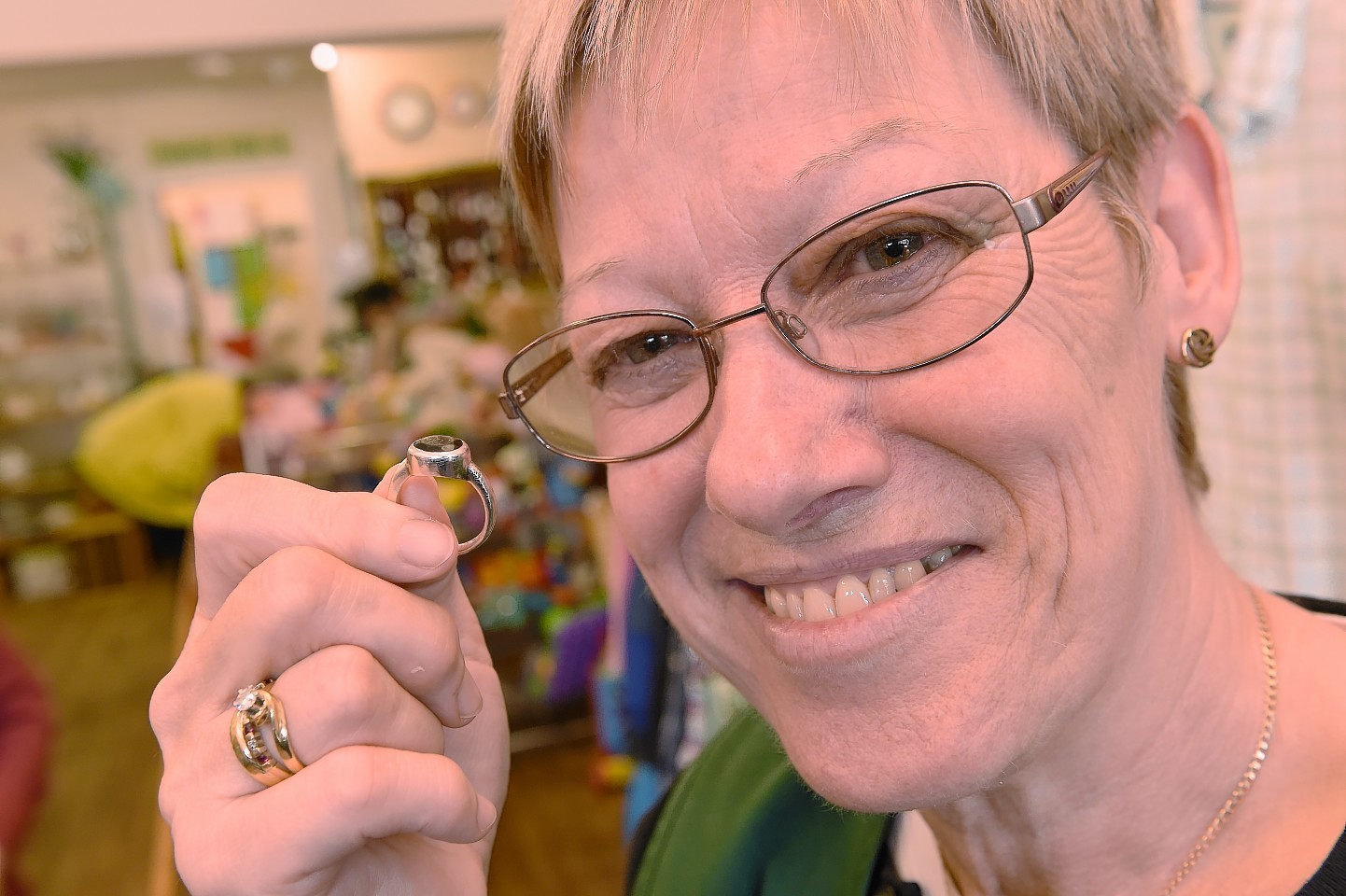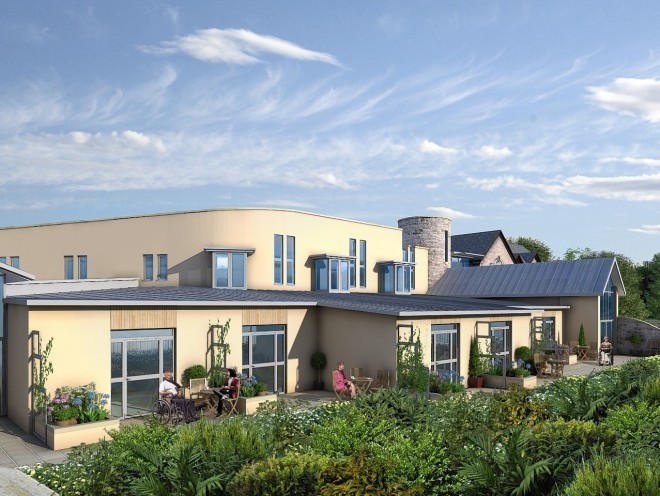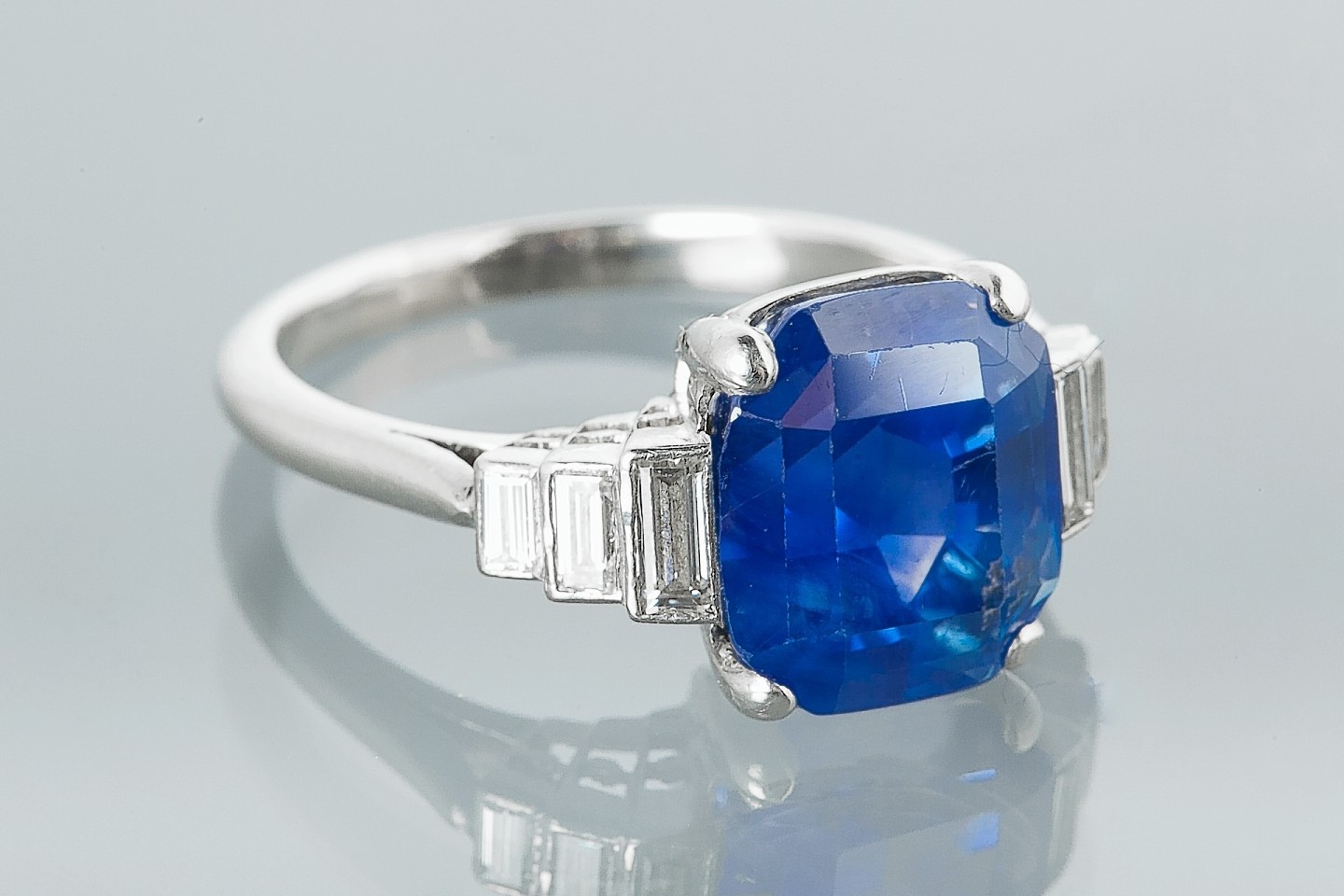A ring donated to a charity by a mystery benefactor has delivered a massive boost to the £4.5million Highland Hospice appeal.
The platinum band set with a large blue sapphire and six diamonds was in a sealed brown envelope inside a box left at the Inverness-based organisation’s Tain shop.
Staff did think it looked a bit special, and asked an expert to value it.
They were told it might fetch between £800-£1,000, so decided to put it up for auction.
But when the hammer finally fell at a sale in Glasgow, its price had reached £19,500 – more than 15 times its estimate.
The new owner, a jewellery dealer from outside Scotland, won a fierce two-way bidding war to land the sparkler.
And auction house McTear’s waived its usual fee for the sale as the proceeds were going to a good cause – the hospice’s appeal to extend its premises in Inverness.
Last night, the volunteer who found the ring while sorting donations said she was “gobsmacked” at the sale price.
Christine Weidner, 62, said: “It’s absolutely amazing and wonderful that it has sold for so much.
“The money is going to a wonderful cause.”
The ring was discovered in a small brown envelope, along with other items of jewellery.
Mrs Weidner, who has volunteered at the Tain shop for 11 years, said: “We looked to see if there was a hallmark but there was nothing there.
“My husband Karl picked me up that day and he looked at it in a magnifying glass but we couldn’t see anything.
“I passed it to my supervisor and then it went to be valued.
“We were all gobsmacked when we were told how much it went for.”
Mrs Weidner added: “My colleague Maimie Mackay had been looking at the ring and was waiting for it to come back in the shop so she could buy it. She had even tried it on.
“She was stunned when we told her what it had sold for.
“We are so lucky to have some beautiful donations. People are so generous and it is a busy shop.
“It is a mystery about who donated it. We may never know.”
The hospice’s main fundraising drive is to collect £4.5million towards a major upgrade of the Ness Walk building, which provides care for the terminally ill.
Susan Cooper, retail manager at Highland Hospice, said: “It is quite a shock that so much was paid for it but we are absolutely thrilled.
“I got an e-mail notification as I couldn’t make the auction and I thought I was reading it wrongly or there had been a mistake.
“I called McTear’s who confirmed thousands of pounds would soon be with the hospice. When we were given the ring we thought we might get some money for it but we never imagined we would raise this much.”
The sale price also appears to have taken auctioneers by surprise.
McTear’s managing director, Brian Clements, added: “This ring is proof that anything can happen during an auction if you have interested parties who are determined to win a lot.
“Jewellery is always popular and this ring caught the eye of a few buyers who were instantly taken by the large sapphire’s fantastic cut, colour and clarity.
“The ring attracted fierce bidding and I am delighted that it has raised such a fantastic amount for such a worthy cause.”
Auction price took everyone by surprise
The price fetched by the sapphire and diamond ring surprised both the hospice and experts at the auction house.
In fact, the auctioneers said that the stone might be synthetic, estimating its value at £800-£1,200.
But this failed to deter the two people bidding by telephone at the auction in Glasgow.
Sarah Cotter, jewellery specialist at McTear’s, said the sapphire was cushion-cut, with three baguette-cut diamonds on each shoulder.
The ring band is platinum and is size P. It may date from the 1940s.
And it appears to have been well-loved by its previous owner, as scratches and marks are visible on the stone and the band, indicating that it was worn regularly.
Ms Cotter said the auction house recently sold a 6.5 carat diamond for £22,000.
She said: “For this to go for £19,500 is significant. For that price you could have a diamond.”
Ms Cotter said that the auction house handled a lot of synthetic stones, although it was rare to have such a ring going to auction in Glasgow.
She said: “People started making synthetic stones in the late 19th century.
“This sapphire had a couple of characteristics which suggested that it might be synthetic, including colour zoning.
“This is when there is not a consistent colour through the stone.
“With this one, the shape of the bands made us think it was synthetic.
“The man who bought it was very experienced and was happy just by eye that it was natural.”
She added: “He was delighted when I told him that the money would be going to the charity.”



